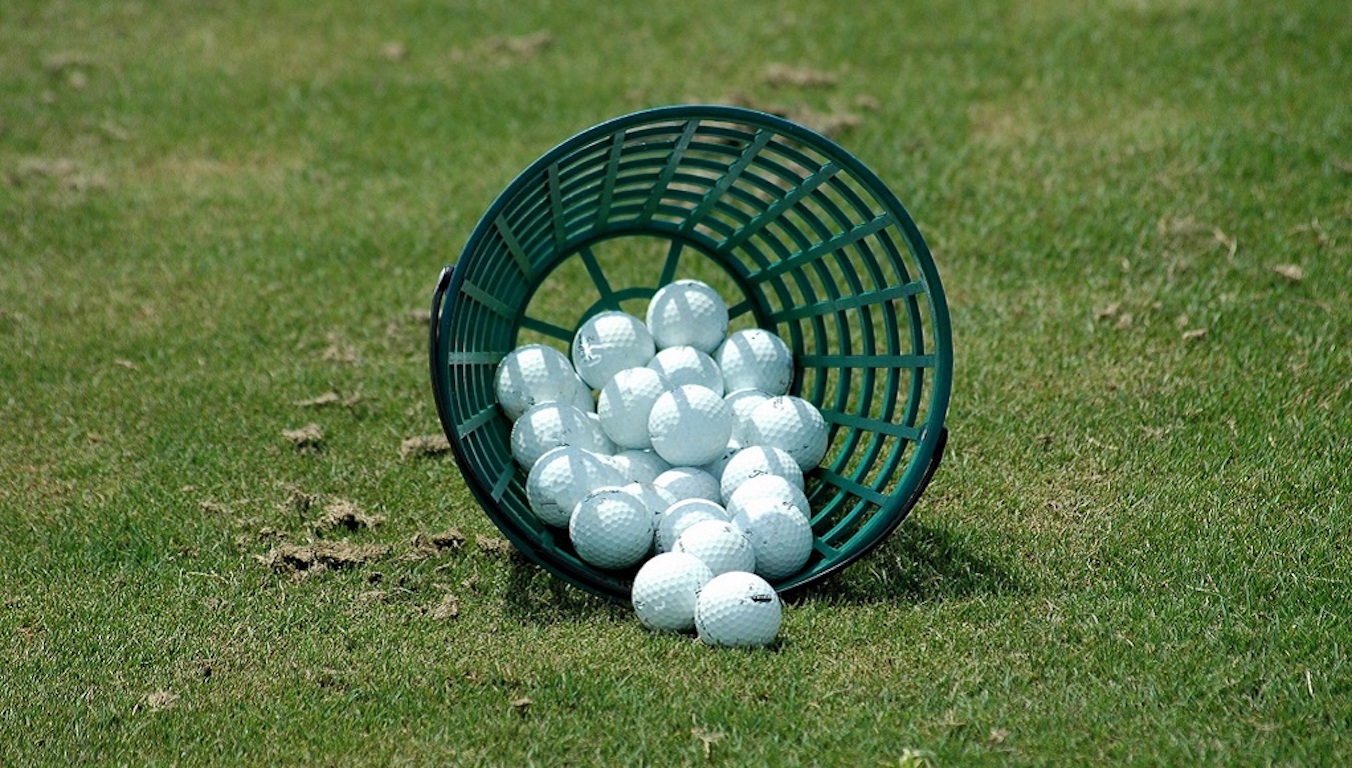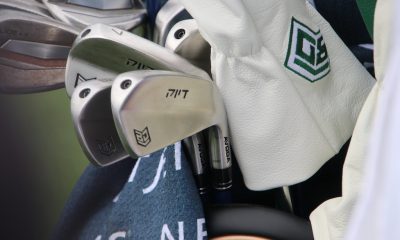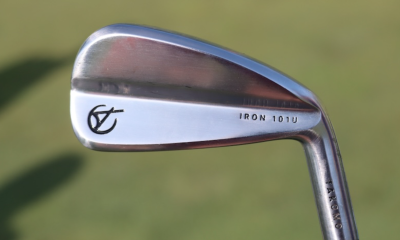Opinion & Analysis
Does Rory have what it takes to win like Woods?

On the Monday morning after Tiger Woods secured his seventh career victory at Doral, it was the lead story on ESPN.com. Not baseball, basketball nor football. What was known to be true has been confirmed; there has never a star in the history of golf like Woods. He wins and suddenly the casual sports fan cares about golf. He is the quintessential frontrunner in a nation of frontrunners. And he is the biggest celebrity that the game has ever seen.
There have been other players that have become a part of the general landscape of American sport. But the only comparison to Tiger’s celebrity in the modern era is Arnold Palmer. Palmer had the looks of a matinee idol and the guts of a burglar, was a perfect combination for a sport in need a hero from central casting to represent it at the dawn of the age of television. Palmer was a true celebrity who along with his agent Mark McCormack invented the modern sports celebrity business.
But Palmer never had to deal with paparazzi, cellphone cameras, tabloid media and the blogosphere. He was protected from distractions and detractors in a way that simply is not possible today.
Golf is arguably the sport that is the least compatible with celebrity. Notoriety means distraction and there is precious little room for distraction in the mind of a golfer. Woods was born and raised in the electronic age; he was groomed not only to survive it, but also to thrive in it. He inspires love and hate. He gets fan mail and he gets death threats. Whatever you might think of him, he is a compelling figure. He is a household name and a topic that everyone knows something about. He was taught from an early age how to seal himself in cocoon of competitive plasma, only allowing a select few in and a precious little information out. He has proven that he can handle the pressure and the scrutiny and still perform at the highest level.
At the other end of the leaderboard this week was Rory McIlroy. He’s ranked as the top golfer in the world, but McIlroy spent the week sorting out his swing to recapture the magic that catapulted him to the top of the game last year.
Along with his five wins in 2012, including his second major championship, came attention for the young Irishman; people loved to watch Rory take the hardest game and make it look simple. Like Tiger, the combination of talent, looks, achievement and perceived personality has made Rory a celebrity. When he signed on the dotted line with Nike, it confirmed that he wanted to see if he could do what only Woods has done so far; be a mega-celebrity in a game traditionally dominated by introverts.
It’s too early to tell whether Rory will be able to deal with the pressure that comes from oversized contracts and matching expectations. He is dealing with a lot of new things in a sport that favors routine. In his pre-tournament press conference, McIlroy said that he wanted to, “go out there and remember to smile, to have fun.”
But the athletes that define our era are not the guys who go out and have fun. Michael Jordan set the modern standard for the “winning is everything” athlete at Team Nike and Tiger Woods is a worthy heir to that legacy. They have in common a burning desire to be the best, to place themselves in a category not only apart from the current completion but any competition ever. It takes a person who doesn’t care what others do or what others think — someone who does not care about being liked. The game is not fun for them. Winning is fun; and maybe more than that. It’s oxygen, and without their wins they would cease to be who they are.
The reason that Rory’s trajectory is so enticing is because it presents a situation that we’ve never witnessed — Rory has shown us that he has the game to beat Woods, even when Woods is at his very best. Like Woods, McIlroy hits towering dives, laser-like irons and is daring and imaginative with his wedges. McIlroy’s eight-shot victory in the 2011 U.S. Open was the most dominating performance since Woods’ 15-shot destruction of the field in the 2000 U.S. Open. His record eight-shot margin of victory in the 2012 PGA Championship bested by one shot the previous mark set by Jack Nicklaus.
When you compare resumes, the only other men who have accomplished as much, as soon as McIlroy are Woods and Nicklaus. Having both Woods and McIlroy at the top of their games at the same time would be a classic matchup of Invincible vs. Inevitable, the most compelling rivalry since Nicklaus and Watson.
Woods has spent two years rebuilding his swing, but the more significant renovations took place in his psyche. He took the damaged edifice that was his competitive confidence and gutted it to the walls. In its place is a brand new structure that is built to take him to 18 majors and beyond. It is doubtful that anyone or anything will be allowed to distract him again in his quest.
As for young McIlroy, he has the potential to do any thing that he wants. As he finds his way forward, his personal and professional success will depend on him deciding exactly what that is. His 65 on Sunday at Doral showed that maybe all he needs is some competitive rounds under his belt to get his game firing on all cylinders again. Clearly he wants to play well and he likes to win. But everybody likes to win; the all-time greats needed to win.
To be true a rival with Woods, McIlroy must find a way to match Woods’ single-mindedness. The best person to consult on how to do that would probably be Woods himself, but that’s one range tip he’s probably not willing to share and probably never will. And for Rory, who likes to smile and have fun, maybe that’s a good thing.
- LIKE0
- LEGIT0
- WOW0
- LOL0
- IDHT0
- FLOP0
- OB0
- SHANK0
19th Hole
Vincenzi’s LIV Golf Singapore betting preview: Course specialist ready to thrive once again

After another strong showing in Australia, LIV Golf will head to Sentosa Golf Club in Singapore looking to build off of what was undoubtedly their best event to date.
Sentosa Golf Club sits on the southern tip of Singapore and is one of the most beautiful courses in the world. The course is more than just incredible scenically; it was also rated 55th in Golf Digest’s top-100 courses in 2022-2023 and has been consistently regarded as one of the best courses in Asia. Prior to being part of the LIV rotation, the course hosted the Singapore Open every year since 2005.
Sentosa Golf Club is a par 71 measuring 7,406 yards. The course will require precise ball striking and some length off the tee. It’s possible to go low due to the pristine conditions, but there are also plenty of hazards and difficult spots on the course that can bring double bogey into play in a hurry. The Bermudagrass greens are perfectly manicured, and the course has spent millions on the sub-air system to keep the greens rolling fast. I spoke to Asian Tour player, Travis Smyth, who described the greens as “the best [he’s] ever played.”
Davis Love III, who competed in a Singapore Open in 2019, also gushed over the condition of the golf course.
“I love the greens. They are fabulous,” the 21-time PGA Tour winner said.
Love III also spoke about other aspects of the golf course.
“The greens are great; the fairways are perfect. It is a wonderful course, and it’s tricky off the tee.”
“It’s a long golf course, and you get some long iron shots. It takes somebody hitting it great to hit every green even though they are big.”
As Love III said, the course can be difficult off the tee due to the length of the course and the trouble looming around every corner. It will take a terrific ball striking week to win at Sentosa Golf Club.
In his pre-tournament press conference last season, Phil Mickelson echoed many of the same sentiments.
“To play Sentosa effectively, you’re going to have a lot of shots from 160 to 210, a lot of full 6-, 7-, 8-iron shots, and you need to hit those really well and you need to drive the ball well.”
Golfers who excel from tee to green and can dial in their longer irons will have a massive advantage this week.
Stat Leaders at LIV Golf Adelaide:
Fairways Hit
1.) Louis Oosthuizen
2.) Anirban Lahiri
3.) Jon Rahm
4.) Brendan Steele
5.) Cameron Tringale
Greens in Regulation
1.) Brooks Koepka
2.) Brendan Steele
3.) Dean Burmester
4.) Cameron Tringale
5.) Anirban Lahiri
Birdies Made
1.) Brendan Steele
2.) Dean Burmester
3.) Thomas Pieters
4.) Patrick Reed
5.) Carlos Ortiz
LIV Golf Individual Standings:
1.) Joaquin Niemann
2.) Jon Rahm
3.) Dean Burmester
4.) Louis Oosthuizen
5.) Abraham Ancer
LIV Golf Team Standings:
1.) Crushers
2.) Legion XIII
3.) Torque
4.) Stinger GC
5.) Ripper GC
LIV Golf Singapore Picks
Sergio Garcia +3000 (DraftKings)
Sergio Garcia is no stranger to Sentosa Golf Club. The Spaniard won the Singapore Open in 2018 by five strokes and lost in a playoff at LIV Singapore last year to scorching hot Talor Gooch. Looking at the course setup, it’s no surprise that a player like Sergio has played incredible golf here. He’s long off the tee and is one of the better long iron players in the world when he’s in form. Garcia is also statistically a much better putter on Bermudagrass than he is on other putting surfaces. He’s putt extremely well on Sentosa’s incredibly pure green complexes.
This season, Garcia has two runner-up finishes, both of them being playoff losses. Both El Camaleon and Doral are courses he’s had success at in his career. The Spaniard is a player who plays well at his tracks, and Sentosa is one of them. I believe Sergio will get himself in the mix this week. Hopefully the third time is a charm in Singapore.
Paul Casey +3300 (FanDuel)
Paul Casey is in the midst of one of his best seasons in the five years or so. The results recently have been up and down, but he’s shown that when he’s on a golf course that suits his game, he’s amongst the contenders.
This season, Casey has finishes of T5 (LIV Las Vegas), T2 (LIV Hong Kong), and a 6th at the Singapore Classic on the DP World Tour. At his best, the Englishman is one of the best long iron players in the world, which makes him a strong fit for Sentosa. Despite being in poor form last season, he was able to fire a Sunday 63, which shows he can low here at the course.
It’s been three years since Casey has won a tournament (Omega Dubai Desert Classic in 2021), but he’s been one of the top players on LIV this season and I think he can get it done at some point this season.
Mito Pereira +5000 (Bet365)
Since Mito Pereira’s unfortunate demise at the 2022 PGA Championship, he’s been extremely inconsistent. However, over the past few months, the Chilean has played well on the International Series as well as his most recent LIV start. Mito finished 8th at LIV Adelaide, which was his best LIV finish this season.
Last year, Pereira finished 5th at LIV Singapore, shooting fantastic rounds of 67-66-66. It makes sense why Mito would like Sentosa, as preeminent ball strikers tend to rise to the challenge of the golf course. He’s a great long iron player who is long and straight off the tee.
Mito has some experience playing in Asia and is one of the most talented players on LIV who’s yet to get in the winner’s circle. I have questions about whether or not he can come through once in contention, but if he gets there, I’m happy to roll the dice.
Andy Ogletree +15000 (DraftKings)
Andy Ogletree is a player I expected to have a strong 2024 but struggled early in his first full season on LIV. After failing to crack the top-25 in any LIV event this year, the former U.S. Amateur champion finally figured things out, finished in a tie for 3rd at LIV Adelaide.
Ogletree should be incredible comfortable playing in Singapore. He won the International Series Qatar last year and finished T3 at the International Series Singapore. The 26-year-old was arguably the best player on the Asian Tour in 2023 and has been fantastic in the continent over the past 18 months.
If Ogletree has indeed found form, he looks to be an amazing value at triple-digit odds.
- LIKE3
- LEGIT3
- WOW1
- LOL2
- IDHT0
- FLOP2
- OB0
- SHANK0
Opinion & Analysis
Ryan: Lessons from the worst golf instructor in America

In Tampa, there is a golf course that boasts carts that do not work, a water range, and a group of players none of which have any chance to break 80. The course is overseen by a staff of crusty men who have succeeded at nothing in life but ending up at the worst-run course in America. However, this place is no failure. With several other local courses going out of business — and boasting outstanding greens — the place is booked full.
While I came for the great greens, I stayed to watch our resident instructor; a poor-tempered, method teacher who caters to the hopeless. At first, it was simply hilarious. However, after months of listening and watching, something clicked. I realized I had a front-row seat to the worst golf instructor in America.
Here are some of my key takeaways.
Method Teacher
It is widely accepted that there are three types of golf instructors: system teachers, non-system teachers, and method teachers. Method teachers prescribe the same antidote for each student based on a preamble which teachers can learn in a couple day certification.
Method teaching allows anyone to be certified. This process caters to the lowest caliber instructor, creating the illusion of competency. This empowers these underqualified instructors with the moniker of “certified” to prey on the innocent and uninformed.
The Cult of Stack and Jilt
The Stack and Tilt website proudly boasts, “A golfer swings his hands inward in the backswing as opposed to straight back to 1) create power, similar to a field goal kicker moving his leg in an arc and 2) to promote a swing that is in-to-out, which produces a draw (and eliminates a slice).”
Now, let me tell you something, there is this law of the universe which says “energy can either be created or destroyed,” so either these guys are defying physics or they have no idea what they are taking about. Further, the idea that the first move of the backswing determines impact is conjecture with a splash of utter fantasy.
These are the pontifications of a method — a set of prescriptions applied to everyone with the hope of some success through the placebo effect. It is one thing for a naive student to believe, for a golf instructor to drink and then dispel this Kool-Aid is malpractice.
Fooled by Randomness
In flipping a coin, or even a March Madness bet, there is a 50-50 chance of success. In golf, especially for new players, results are asymmetric. Simply put: Anything can happen. The problem is that when bad instructors work with high handicappers, each and every shot gets its own diagnosis and prescription. Soon the student is overwhelmed.
Now here’s the sinister thing: The overwhelming information is by design. In this case, the coach is not trying to make you better, they are trying to make you reliant on them for information. A quasi Stockholm syndrome of codependency.
Practice
One of the most important scientists of the 20th century was Ivan Pavlov. As you might recall, he found that animals, including humans, could be conditioned into biological responses. In golf, the idea of practice has made millions of hackers salivate that they are one lesson or practice session from “the secret.”
Sunk Cost
The idea for the worst golf instructor is to create control and dependency so that clients ignore the sunk cost of not getting better. Instead, they are held hostage by the idea that they are one lesson or tip away from unlocking their potential.
Cliches
Cliches have the effect of terminating thoughts. However, they are the weapon of choice for this instructor. Add some hyperbole and students actually get no information. As a result, these players couldn’t play golf. When they did, they had no real scheme. With no idea what they are doing, they would descend into a spiral of no idea what to do, bad results, lower confidence, and running back to the lesson tee from more cliches.
The fact is that poor instruction is about conditioning players to become reliant members of your cult. To take away autonomy. To use practice as a form of control. To sell more golf lessons not by making people better but through the guise that without the teacher, the student can never reach their full potential. All under the umbrella of being “certified” (in a 2-day course!) and a melee of cliches.
This of course is not just happening at my muni but is a systemic problem around the country and around the world, the consequences of which are giving people a great reason to stop playing golf. But hey, at least it’s selling a lot of golf balls…
- LIKE17
- LEGIT1
- WOW0
- LOL4
- IDHT1
- FLOP0
- OB0
- SHANK17
19th Hole
Vincenzi’s 2024 Zurich Classic of New Orleans betting preview

The PGA TOUR heads to New Orleans to play the 2023 Zurich Classic of New Orleans. In a welcome change from the usual stroke play, the Zurich Classic is a team event. On Thursday and Saturday, the teams play best ball, and on Friday and Sunday the teams play alternate shot.
TPC Louisiana is a par 72 that measures 7,425 yards. The course features some short par 4s and plenty of water and bunkers, which makes for a lot of exciting risk/reward scenarios for competitors. Pete Dye designed the course in 2004 specifically for the Zurich Classic, although the event didn’t make its debut until 2007 because of Hurricane Katrina.
Coming off of the Masters and a signature event in consecutive weeks, the field this week is a step down, and understandably so. Many of the world’s top players will be using this time to rest after a busy stretch.
However, there are some interesting teams this season with some stars making surprise appearances in the team event. Some notable teams include Patrick Cantlay and Xander Schauffele, Rory McIlroy and Shane Lowry, Collin Morikawa and Kurt Kitayama, Will Zalatoris and Sahith Theegala as well as a few Canadian teams, Nick Taylor and Adam Hadwin and Taylor Pendrith and Corey Conners.
Past Winners at TPC Louisiana
- 2023: Riley/Hardy (-30)
- 2022: Cantlay/Schauffele (-29)
- 2021: Leishman/Smith (-20)
- 2019: Palmer/Rahm (-26)
- 2018: Horschel/Piercy (-22)
- 2017: Blixt/Smith (-27)
2024 Zurich Classic of New Orleans Picks
Tom Hoge/Maverick McNealy +2500 (DraftKings)
Tom Hoge is coming off of a solid T18 finish at the RBC Heritage and finished T13 at last year’s Zurich Classic alongside Harris English.
This season, Hoge is having one of his best years on Tour in terms of Strokes Gained: Approach. In his last 24 rounds, the only player to top him on the category is Scottie Scheffler. Hoge has been solid on Pete Dye designs, ranking 28th in the field over his past 36 rounds.
McNealy is also having a solid season. He’s finished T6 at the Waste Management Phoenix Open and T9 at the PLAYERS Championship. He recently started working with world renowned swing coach, Butch Harmon, and its seemingly paid dividends in 2024.
Keith Mitchell/Joel Dahmen +4000 (DraftKings)
Keith Mitchell is having a fantastic season, finishing in the top-20 of five of his past seven starts on Tour. Most recently, Mitchell finished T14 at the Valero Texas Open and gained a whopping 6.0 strokes off the tee. He finished 6th at last year’s Zurich Classic.
Joel Dahmen is having a resurgent year and has been dialed in with his irons. He also has a T11 finish at the PLAYERS Championship at TPC Sawgrass which is another Pete Dye track. With Mitchell’s length and Dahmen’s ability to put it close with his short irons, the Mitchell/Dahmen combination will be dangerous this week.
Taylor Moore/Matt NeSmith +6500 (DraftKings)
Taylor Moore has quickly developed into one of the more consistent players on Tour. He’s finished in the top-20 in three of his past four starts, including a very impressive showing at The Masters, finishing T20. He’s also finished T4 at this event in consecutive seasons alongside Matt NeSmith.
NeSmith isn’t having a great 2024, but has seemed to elevate his game in this format. He finished T26 at Pete Dye’s TPC Sawgrass, which gives the 30-year-old something to build off of. NeSmith is also a great putter on Bermudagrass, which could help elevate Moore’s ball striking prowess.
- LIKE8
- LEGIT3
- WOW1
- LOL1
- IDHT0
- FLOP3
- OB1
- SHANK2
-

 19th Hole1 week ago
19th Hole1 week agoJustin Thomas on the equipment choice of Scottie Scheffler that he thinks is ‘weird’
-

 19th Hole1 week ago
19th Hole1 week ago‘Absolutely crazy’ – Major champ lays into Patrick Cantlay over his decision on final hole of RBC Heritage
-

 19th Hole3 weeks ago
19th Hole3 weeks agoTwo star names reportedly blanked Jon Rahm all week at the Masters
-

 19th Hole2 weeks ago
19th Hole2 weeks agoReport: LIV Golf identifies latest star name they hope to sign to breakaway tour
-

 19th Hole2 weeks ago
19th Hole2 weeks agoNeal Shipley presser ends in awkward fashion after reporter claims Tiger handed him note on 8th fairway
-

 19th Hole2 weeks ago
19th Hole2 weeks agoBrandel Chamblee has ‘no doubt’ who started the McIlroy/LIV rumor and why
-

 Equipment3 weeks ago
Equipment3 weeks agoWhat we know about Bryson DeChambeau’s 3D-printed Avoda irons
-

 19th Hole6 days ago
19th Hole6 days agoLET pro gives detailed financial breakdown of first week on tour…and the net result may shock you



















Harvey
Mar 20, 2013 at 10:56 am
Tiger and Rory are total opposites, even though I am a tiger fan he is a freak and has some serious mental issues off the course, he hasn’t ever experienced a normal life, similar to Michael Jackson. On the other hand Rory is level headed, grounded and is looking like he is getting into a great relationship early in his career. Setting him up with everything he needs to focus and fully apply himself to practice. Just look at other sports stars such as federer in tennis, beckham and messi in soccer.. Sorted personal life out first then dominated in their chosen sport
Matthew Bacon
Mar 18, 2013 at 7:35 pm
Rory has incredible talent but has never shown the consistency that set Tiger apart from the rest. Some day someone may eclipse Tiger’s decade of dominance but Rory’s not the guy
Ryder
Mar 14, 2013 at 5:53 pm
What evidence is their that Rory could ever beat Tiger at Tigers best? That’s why Tiger is who he is, there is no one. If Rory could beat Tiger at Tigers best, then why was this article written?
MLamar
Mar 14, 2013 at 1:35 pm
Short Answer: “NO”
Francis bonarigo
Mar 14, 2013 at 10:37 am
I love how the writer thinks he knows what mental frame of mind Rory needs to challenge Tger Woods. Rory has already proven that his approach works well. He doesn’t need to mirror Tiger to beat him. Rory is forging his own path to greatness. These are hindsight concepts, exceptional athletes rewrite old concepts with news ones and make narrow minded people look silly along the way.
dapadre
Mar 13, 2013 at 6:49 am
No. He will do well and if he maintains, get himself a protion of golf history, but like Tiger, NO WAY. Tiger spoiled us to the point the things he did we saw as normal but now have come to see how talented it was. Look at his win percentage, cuts made percentage, Pro Tournaments won and majors.
Also Rory doesnt have that killer mentality that Tiger and past greats have had ( ie The Golden Bear, The King Player). These guys wanted to give it to the field even when they were ahead. Rory to me looks like a really nice kid that just turned out to be a damn good golfer. I dont think his mental make up is made for this game. No qualms, he seems to be really liked and we can all see why.
Swooshmeup
Mar 13, 2013 at 12:22 am
Never!
John
Mar 12, 2013 at 12:46 pm
Can Rory win like Tiger? No chance, don’t believe anyone ever will again.